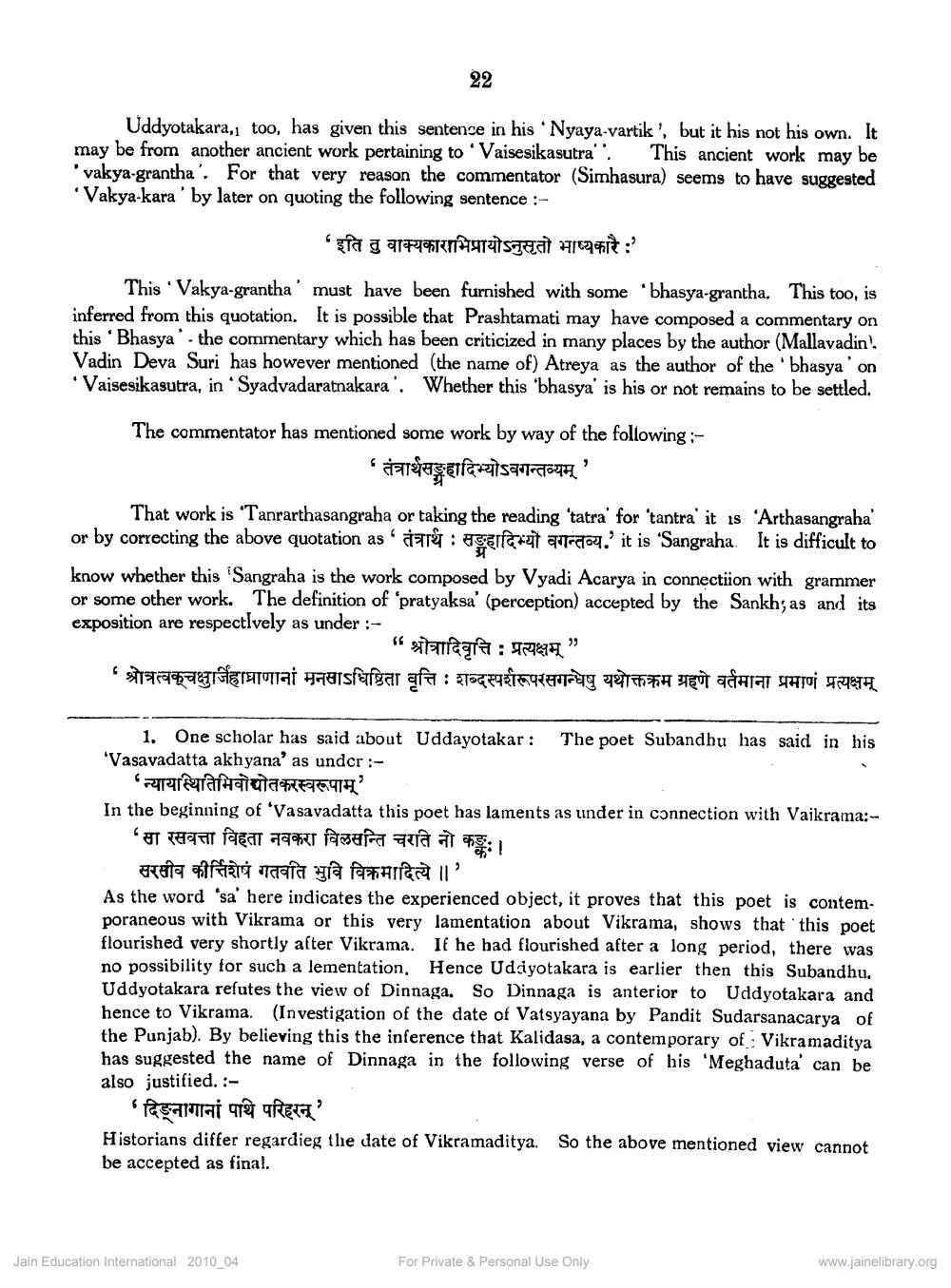________________
22
Uddyotakara, too, has given this sentence in his Nyaya-vartik', but it his not his own. It may be from another ancient work pertaining to 'Vaisesikasutra This ancient work may be 'vakya-grantha'. For that very reason the commentator (Simhasura) seems to have suggested
Vakya-kara' by later on quoting the following sentence :
fa a
tr
aitstaat 121t:
This 'Vakya-grantha' must have been furnished with some 'bhasya-grantha. This too, is inferred from this quotation. It is possible that Prashtamati may have composed a commentary on this 'Bhasya'. the commentary which has been criticized in many places by the author (Mallavadin. Vadin Deva Suri has however mentioned (the name of) Atreya as the author of the 'bhasya' on
Vaisesikasutra, in Syadvadaratnakara'. Whether this 'bhasya' is his or not remains to be settled.
The commentator has mentioned some work by way of the following:
RETSEşarfe is recomm'
That work is 'Tanrarthasangraha or taking the reading 'tatra' for 'tantra' it is 'Arthasangraha or by correcting the above quotation as' तंत्रार्थ tremult a caq.' it is 'Sangraha. It is difficult to know whether this Sangraha is the work composed by Vyadi Acarya in connection with grammer or some other work. The definition of 'pratyaksa (perception) accepted by the Sankh; as and its exposition are respectively as under :
"stanah : 9797" 'श्रोत्रत्वक्चक्षुर्जिबाघ्राणानां मनसाऽधिष्ठिता वृत्ति : शब्दस्पर्शरूपरसगन्धेषु यथोक्तक्रम ग्रहणे वर्तमाना प्रमाणं प्रत्यक्षम्
1. One scholar has said about Uddayotakar : The poet Subandhu has said in his "Vasavadatta akhyana' as under :
'न्यायास्थितिमिवोद्योतकरस्वरूपाम्' In the beginning of 'Vasavadatta this poet has laments as under in connection with Vaikrama:
'सा रसवत्ता विहता नवकरा विलसन्ति चरति नो कङः।
सरसीव कीर्तिशेषं गतवति भुवि विक्रमादित्ये॥' As the word 'sa here indicates the experienced object, it proves that this poet is contemporaneous with Vikrama or this very lamentation about Vikrama, shows that this poet flourished very shortly after Vikrama. If he had flourished after a long period, there was no possibility for such a lementation. Hence Uddiyotakara is earlier then this Subandhu. Uddyotakara refutes the view of Dinnaga. So Dinnaga is anterior to Uddyotakara and hence to Vikrama. (Investigation of the date of Vatsyayana by Pandit Sudarsanacarya of the Punjab). By believing this the inference that Kalidasa, a contemporary of Vikramaditya has suggested the name of Dinnaga in the following verse of his 'Meghaduta can be also justified. :
SHITAİ Theat' Historians differ regardieg the date of Vikramaditya. So the above mentioned view cannot be accepted as final.
Jain Education International 2010_04
For Private & Personal Use Only
www.jainelibrary.org




